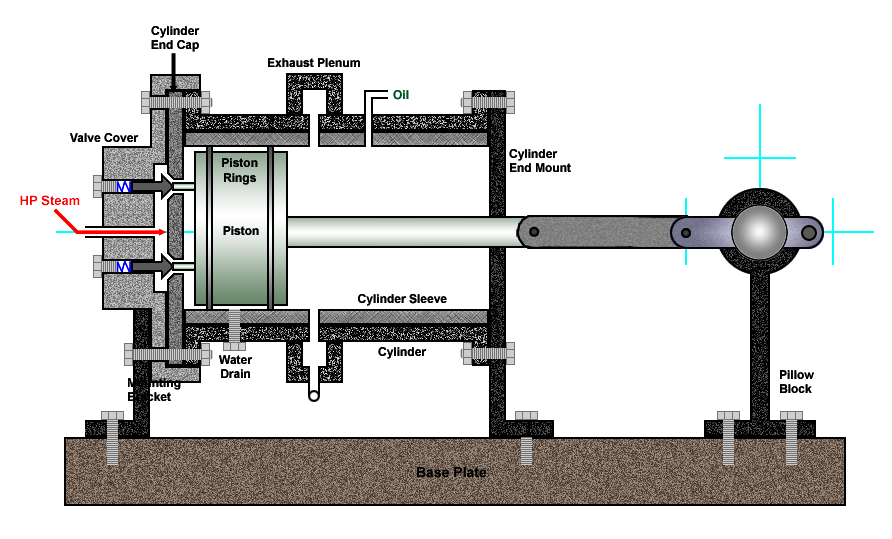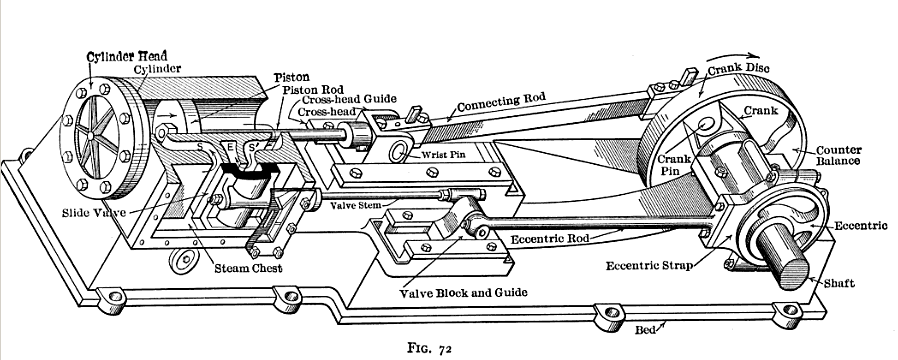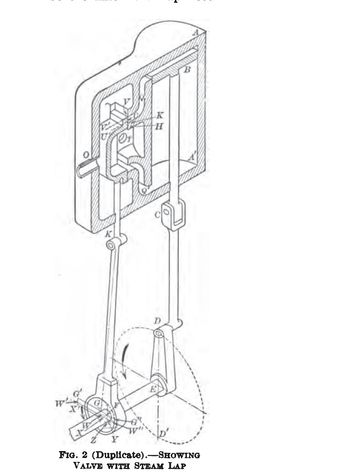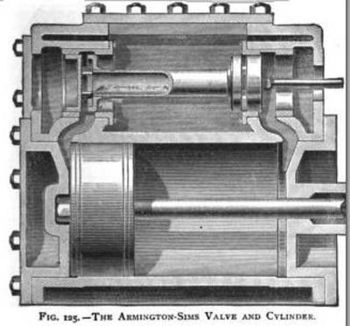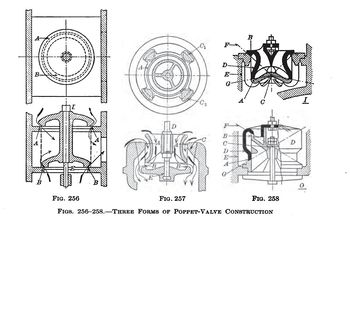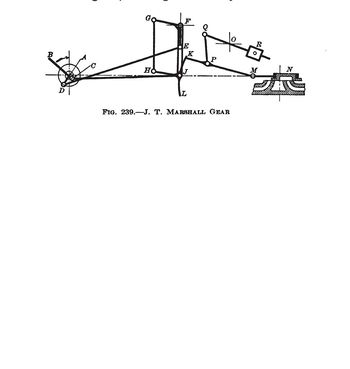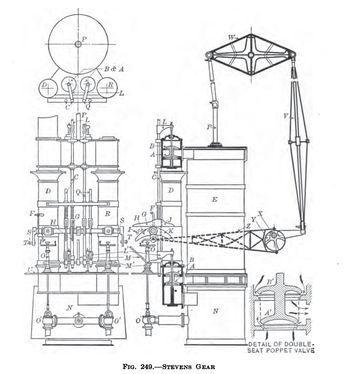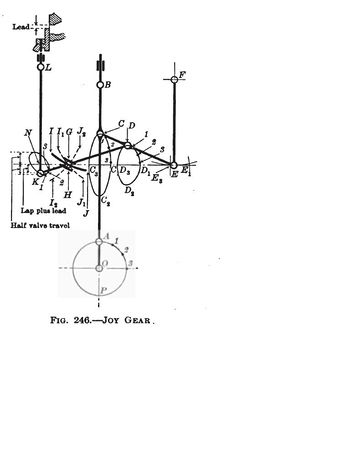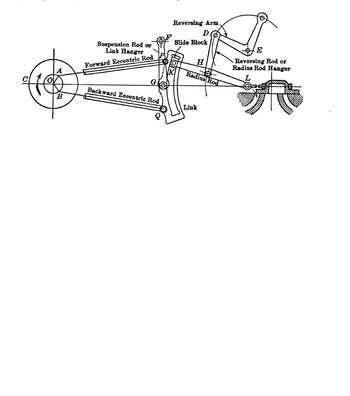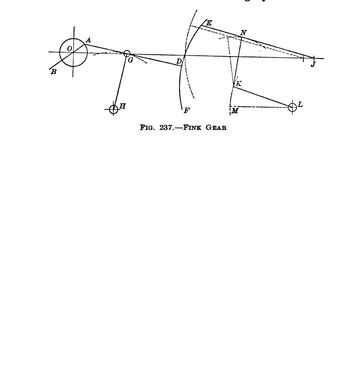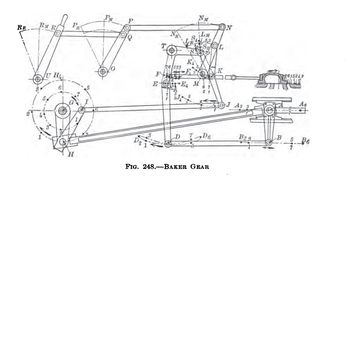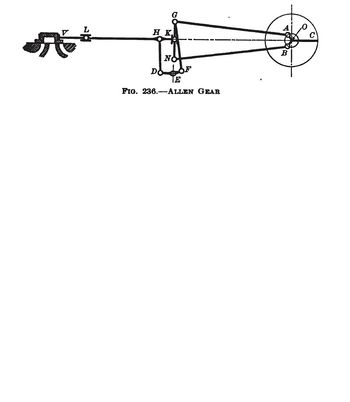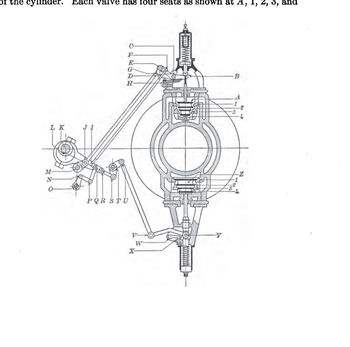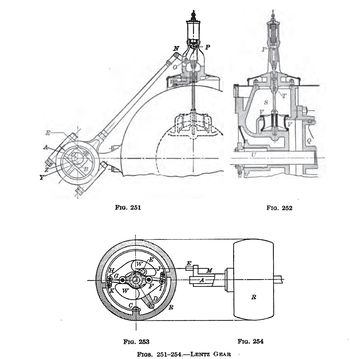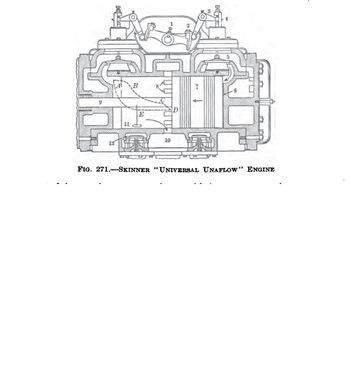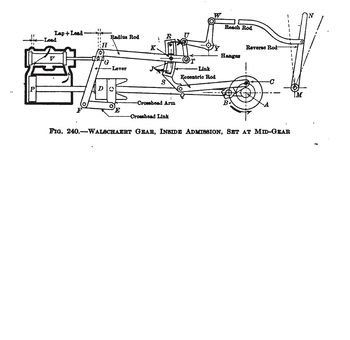Steam Engine Design/Historic
Main > Energy > Steam Engine
Engines
(Reference the Wikipedia article here)
Uniflow Engines
In a uniflow engine steam is admitted only on one side of the piston. At the point of maximum expansion of the steam, an exhaust vent is exposed allow remaining steam to vent. Thus, steam flows in a single direction: into the cylinder, then out of it. Steam control is done via a ball, bump, or piston valve.
Continuous Flow Engines
In a continuous flow engine, steam is admitted on either side of the piston, depending on it's position in the stroke. Typically, a slide valve is used to alternately admit steam into one side of the piston or the other and vent spent steam.
A careful examination of the slide valve (in black, center) shows the flow of steam into the left side of the cylinder while venting steam out of the right.
Valve Design
There are several common styles of conventional valves in steam engines
- slide valve
- piston slide valve
- cam actuated poppet valve
- bump (or bash) valve
- slide valve
Some illustration of slide valve designs:
Each of these has their own advantages and disadvantages often depending on steam conditions and desired durability. Please consult an engineering manual such as Valves And Valve Gears for a detailed discussion of this.
For the simple valves shown above it is not possible to vary the steam cutoff ratio during operation. This usually detrimentally impacts efficiency as one has to set the cutoff ratio higher than needed to keep the engine from stalling during load variation. For this reason a multitude of valve gears were developed for the three basic types of valve designs. The valve gears allow for the adjustment of the cutoff ratio during operation.
Slide Valve and Piston Slide Valve Valve Gears
Poppet Valve Valve Gears
